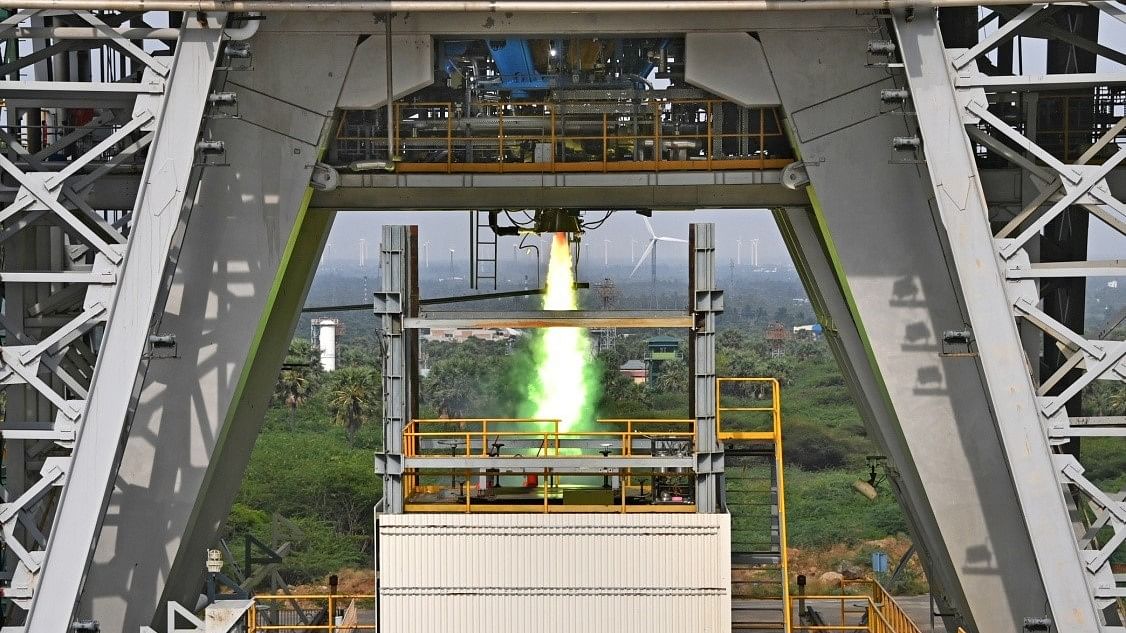
The pre-burner ignition test at IPRC, Mahendragiri.
Credit: ISRO
Bengaluru: The Indian Space Research Organisation (ISRO) has achieved a significant milestone in the development of its semi-cryogenic propulsion systems with the successful ignition trial of a pre-burner.
ISRO, in the run-up to its 2,000-kiloNewton thrust semi-cryogenic engine, developed a pre-burner ignition test article that complements the engine power head system. The ignition trial on the test article was held on May 2.
“Smooth and sustained ignition” of the pre-burner (combustion chamber in the rocket engine), which is vital for the starting of the engine, was demonstrated during the trial held at the cryo integrated engine test facility at the ISRO Propulsion Complex (IPRC) in Mahendragiri, in Tamil Nadu, ISRO said on Monday.
The space agency is developing a semi-cryogenic engine which works on a propellant combination of liquid oxygen and kerosene and is aimed at enhancing the payload capability of launch vehicle Mk III (LVM3) and future launch vehicles.
ISRO carried out the first integrated test on an intermediate configuration of the engine in May, 2023.
The engine ignition is achieved using a start fuel ampule which works on a combination of Triethyle Alumnide and Triethyle Boron, developed by VSSC, and is used for the first time in the engine.
ISRO said the successful ignition of the pre-burner was a “major milestone” in the development of the engine. “This will be followed by development tests on the engine power head test article and fully integrated engine. The development of a semi-cryo stage with 120 tons of propellant loading is also under progress,” ISRO said.
The Liquid Propulsion Systems Centre, in collaboration with ISRO's other launch vehicle centres, is leading efforts in developing semi-cryogenic propulsion systems. The assembly and testing of the propulsion modules were done at the IPRC.